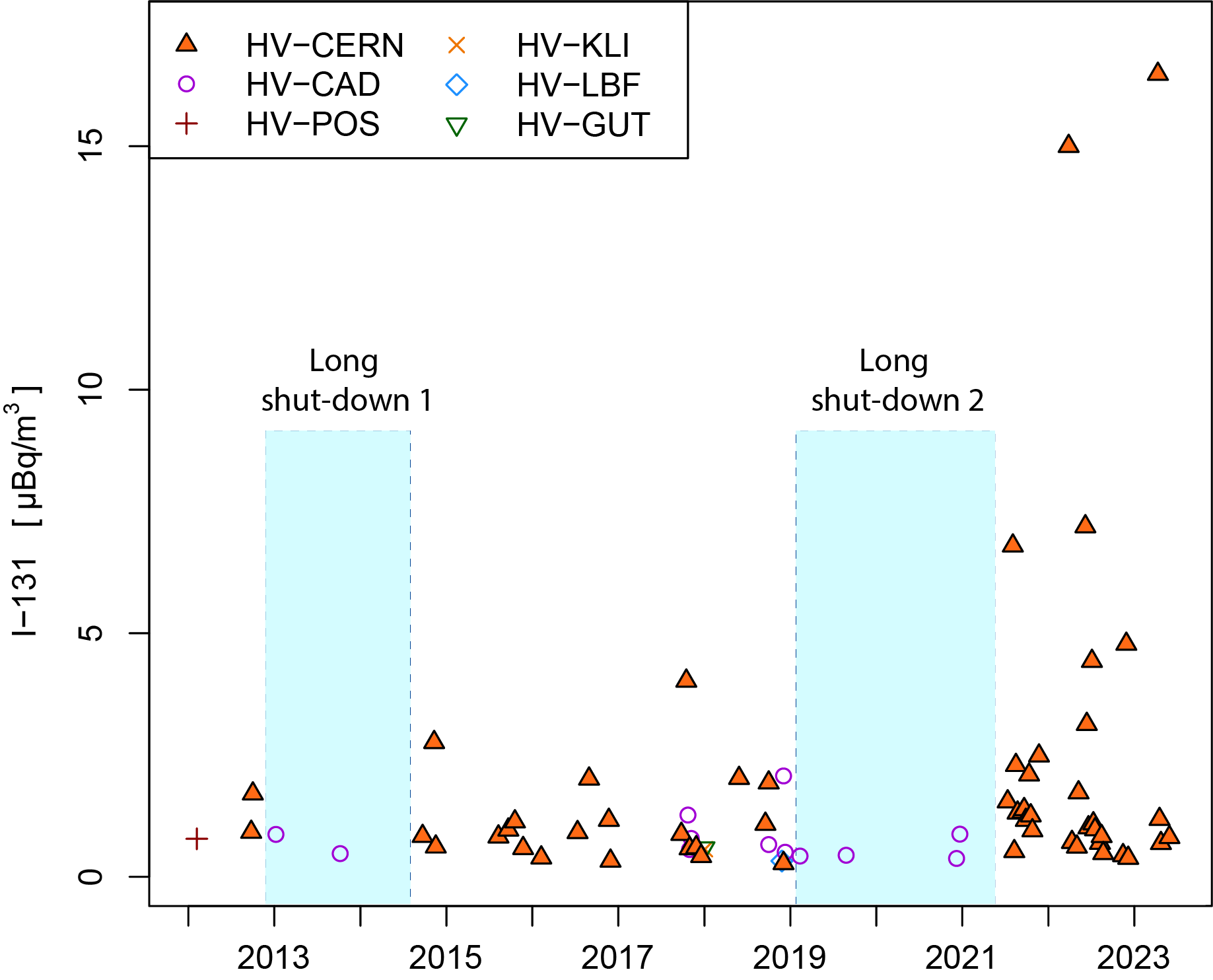If you take a look at the longer time series of iodine-131 in the air on Radenviro “Access to Data/Air: High Volume Aerosol Filter HVS“, you will notice three things.
Firstly, there is a large peak at the end of March/beginning of April 2011 at all stations. This was the radioactive cloud – strongly diluted and no longer a danger to the environment and health – reaching Europe from the west about 3 weeks after the Fukushima reactor accident.

Secondly, if we focus on the time after the Fukushima accident, the graphs mostly show detection limits, indicated by the orange triangles. And these detection limits are mostly smaller than a micro-becquerel. Or, in terms of the Radenviro slang, smaller than “1.00e-6”, as the scale is in Bq/m3. However, this may not always be the case: larger detection limits occur for instance when the filter was changed after a short collection period, thus sampling only a small amount of air, or when the analysis of the sample was delayed and the iodine-131, with its short half-life of 8 days, had already partially decayed.

And thirdly?
Enter the European research facility CERN near Geneva. Here, at the ISOLDE facility, “targets” are bombarded with a high-energy proton beam. Researchers generate a large number of radioactive isotopes and study their behavior. These complex experiments take place in large, closed accelerator facilities under vacuum. Unfortunately, neither the space available here nor the blog author’s knowledge of nuclear physics allow more detailed explanations; however, some further information is linked below. In any case the targets are replaced regularly. Some of the produced isotopes, namely the volatiles, do not miss this opportunity and they escape into the environment during the process of this change of the target. Some of these isotopes don’t get very far, however, and end up right back on the filter of our high-volume aerosol collector (HVS) at CERN. This is why we occasionally detect traces of various radioactive isotopes of the volatile element iodine. Most frequently, we detect iodine-131 and in some cases also iodine-126 (half-life 13 days) and iodine-124 (half-life 4 days) in lower concentrations.

The graph above compiles the measured values of all HVS samples since 2012 in which a small iodine-131 signal was detected, representing less than 2 percent of a total of almost 3600 samples examined during this period. The graph shows that the majority of samples where iodine-131 was detected come from the CERN measurement site. For activities greater than 2 micro-becquerels, virtually all of them were measured at CERN. There were two periods without iodine-131 detections in ambient air samples at CERN and they coincide with the longer, fittingly named “long shut-down 1” and “long shot-down 2” operational interruptions of ISOLDE. During the first “long shut-down”, ISOLDE was equipped with a robot to change the targets. When in full operation, ISOLDE experiments are carried out every 10 days or so, hence we detect iodine-131 once or twice a month. The concentrations are usually a few micro-becquerels per cubic meter of air: this is many times (a factor of 100,000!) below the legal limit for iodine-131 in ambient air and therefore harmless to health.
The minute amounts of iodine-131 that appear from time to time in other HVS stations originate from therapeutic applications of this isotope in medicine. Traces of “medical iodine” can, for example, become airborne when hospital waste is burned.
Further information on ISOLDEISOLDE; Meet ISOLDE: Target Production – YouTube






